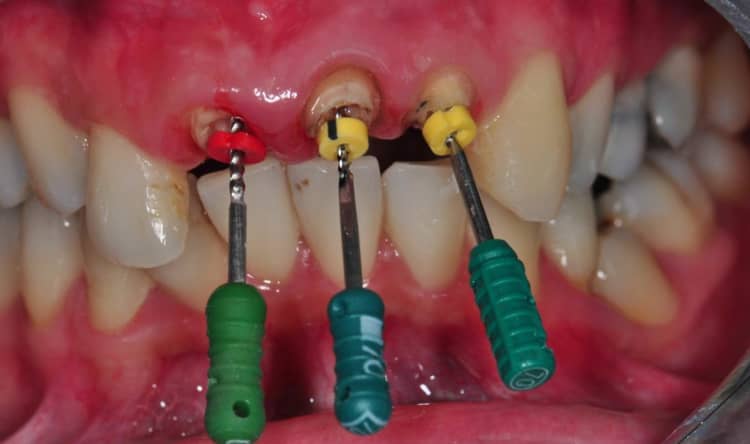MTA (Mineral Trioxide Aggregate) is a good choice for sealing the root canal especially in cases where there is an open root apex or a perforation.
An open root apex occurs when the normal root development is either incomplete (as in an immature permanent tooth) or interrupted (when the nerve or pulp dies in an immature permanent tooth). The normal sequence of root development causes thickening of the dentinal walls and resultant shrinkage of the size of the apical root canal opening (also known as the apical foramen). When the apex is "open", the apical foramen is larger than usual and the dentinal root walls are also thinner.
A perforation may occur during a root canal or cavity preparation. This happens when an instrument penetrates through the root wall and into the periodontal space.
In managing open apices and perforations, the main challenge is sealing the inside of the root canal from the external environment (the periodontal space and the oral cavity). The external environment is wet (with blood and saliva). Most dental materials cannot set or seal in a wet environment. MTA is unique in that it requires moisture to set.
MTA tends to cause the darkening of the tooth that it is placed into. A newer generation of bioceramic cement and sealers have come on to the market recently that appear to have the advantages of MTA without the tooth staining issue.
If you have a functioning liver, lungs, and kidneys, then your body's detoxification ability is intact. There is no need to seek out methods to prevent toxins from entering the body. We have evolved over millions of years to handle minute quantities of environmental heavy metals and other toxins.


